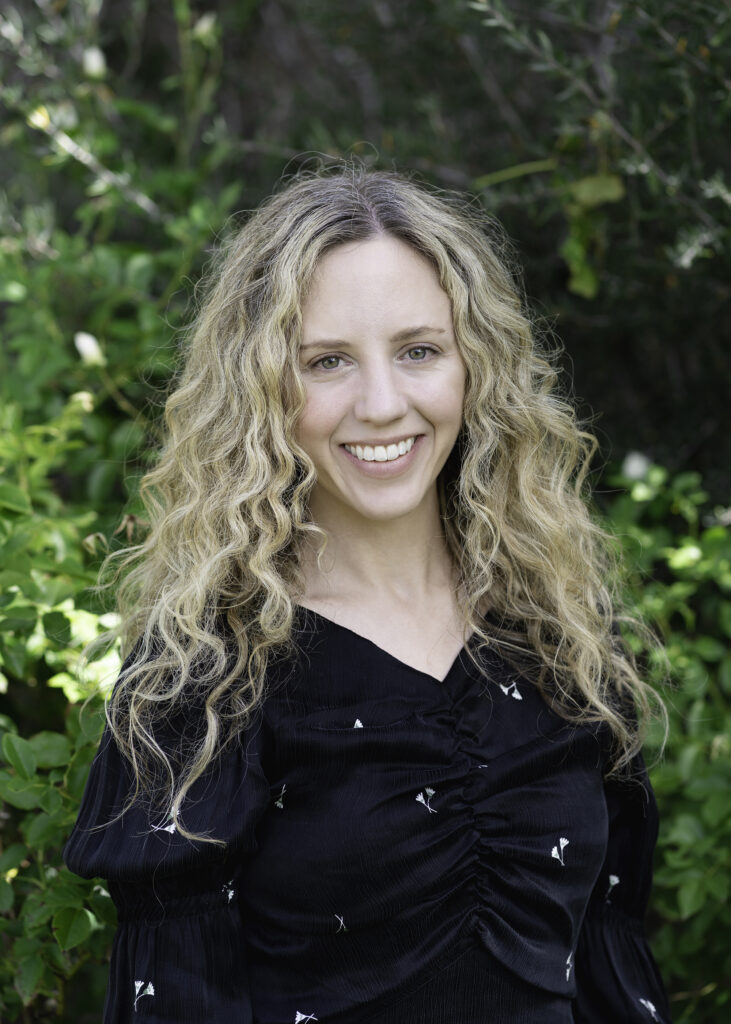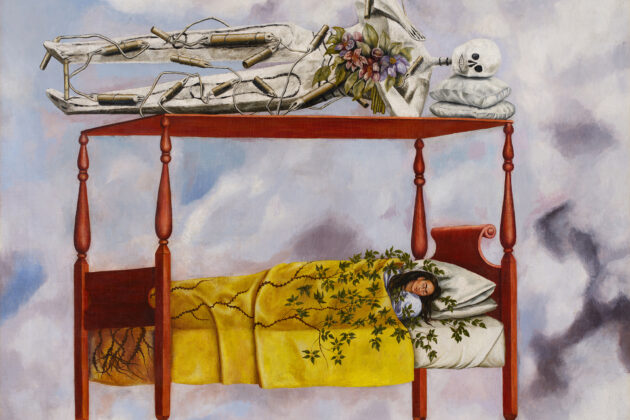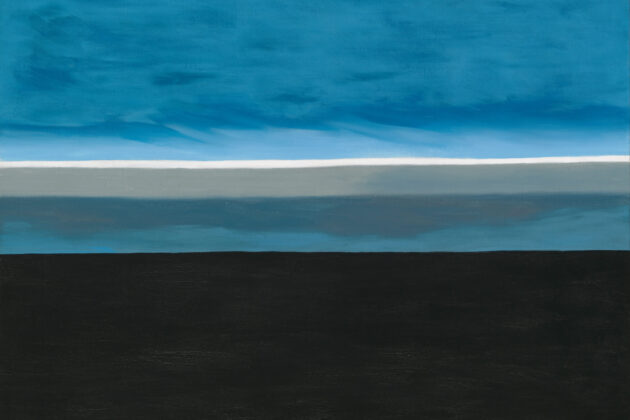
Curious About the Curator? Learn More About Laura Wertheim Joseph

Dr. Laura Wertheim Joseph joined the Georgia O’Keeffe Museum in August as the Director of Curatorial Affairs. In her new role at the O’Keeffe, Joseph will provide strategic leadership for the Museum’s collections, exhibitions, and research initiatives. This includes taking the helm on the reinstallation and artistic direction of the Museum’s collections in the dramatically expanded New O’Keeffe, which is currently under construction. She will also lead all collections management, conservation, digital experience, research, and curatorial efforts at the Museum.
Shortly after her arrival in Santa Fe, we sat down with Joseph to talk about growing up in New Mexico, returning to the Land of Enchantment, and some of Joseph’s artistic inspiration and accomplishments in between.
GOKM: Tell us about how you grew up in New Mexico and what drew you back to the state.
Laura Joseph: I was born in Albuquerque and spent my formative years there. I moved away to attend college in 2002 and have mostly been away for the last 20 years. What I realized over that time is that New Mexico had stayed with me. The painter Franz Kline once told another artist Hazel Belvo, “You never shake your original landscape.” This is an insight that resonates with me at this stage in my life.
Despite not having been back for a long time, there is something about the way this place feels—the light, the smell, the air, the distinctive beauty, the cultural richness—that has shaped me in profound ways. I missed it.
The longer I was away, the more I also came to understand the complexity of this place. That’s something I’m reflecting on as I introduce my young daughter, Viola, and my husband, Taylor, to New Mexico. Having them develop their own relationships with this place is special and meaningful to me.
GOKM: What role, if any, did O’Keeffe have on your childhood or adolescence?
LJ: Both O’Keeffe’s artwork and way of life struck me from a young age. Her independence, her distinctive aesthetic, her commitment to her work intrigued me. It also seemed to me that she captured the way this place felt, emotionally.
I was also interested in the way she navigated how she was perceived. Even as a young girl, I understood she was very intentional about this. She was a woman finding success in a male dominated American art field, and she navigated the sexualization and the gendering of her work strategically.
These were seeds that were planted in my mind as a little girl, but they grew into research interests. Although O’Keeffe wasn’t the center of my research, she was certainly foundational. With time, as I’ve grown and studied, I’ve come to understand how Indigenous and Hispano people and traditions were left out of O’Keeffe’s images and the consequences of these omissions. The work of Dr. Patricia Marroquin Norby (Purépecha) has been very important to my understanding of these issues.
GOKM: Have you always had an interest in art or art history?
LJ: For as long as I can remember, I’ve been interested in a creative life. With O’Keeffe, my fascination was as much about her way of living as it was her art. Of course, these things are deeply intertwined. Myself, I am not an artist, but I have attempted in my own life, to think about my way of living.
I didn’t find my way to art history until later in my life, but I have always found art to be a way of approaching big questions in the world. Art has always been there for me in finding my way.
GOKM: What curatorial work are you most proud of in your career?
LJ: I’m most proud of the journey and the way one project has led me to the next. In A Feast of Astonishments: Charlotte Moorman and the Avant-Garde, 1960s-1980s, I worked with a team from Mary and Leigh Block Museum, and it was an important foundational project for me because it was so collaborative. Together, the curatorial team explored alternatives to the singular narratives that often dominate this field. That was important for the exhibition because Moorman was a figure who was sidelined, and her contributions were not recognized partially because of the inability of the field to realize how her supportive labor was critical to the success of better-known male avant-garde artists. She was a central figure in the avant-garde movement, but you had to look at Moorman in a different light to understand her significance. It took a group effort to get it right.
The wisdom I gained through that project is most certainly present in my most recent curatorial project at the Minnesota Museum of American Art, Hazel Belvo: For Love, which I co-curated with Dakota Hoska (Oglala Lakȟóta). Hazel is an incredible artist who, at 89 years old, had not been the subject of a retrospective. I had the opportunity to work with her, in collaboration with Dakota and the amazing team at the M, to tell her life story through art.
The exhibition focused on how art has been so integral in her life—she has made work at the birth of her children, at the deathbed of her son, when she’s traveling or just eating meals. The ways in which art and life are completely integrated for her are beautiful and important. We tried to honor the way her practice has been dedicated to supporting and uplifting others. Alongside her own vibrant practice as an artist, educator, and feminist leader, she is one of the primary legacy keepers for her former husband George Morrison, the Ojibwe artist whose prominence is rising.
GOKM: We are hearing you speak a lot about collaboration. How do you envision continuing that work at the O’Keeffe?
LJ: Collaboration is inherent to who I am as a person and, therefore, who I am as a curator. Art often focuses on an individual and an individual’s effort. But creative work cannot exist without support. Through my practice, I seek ways to make supportive labor visible. Collaboration also brings forward more multifaceted stories.
I am honored to work with the innovative and deeply knowledgeable team at the O’Keeffe to approach O’Keeffe’s life, work, and impact through many different lenses. This is such an exciting time to be undertaking this work. As we seek both to honor and complicate O’Keeffe’s place in collective consciousness, the expanded space of the New Museum will allow for more perspectives on O’Keeffe to coexist and be in dialog.


